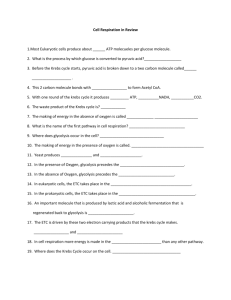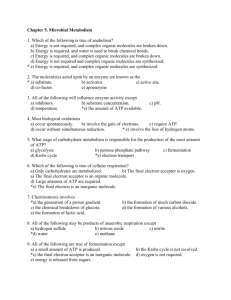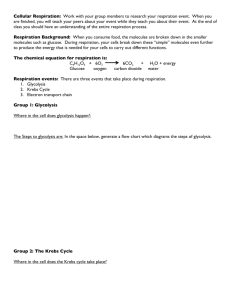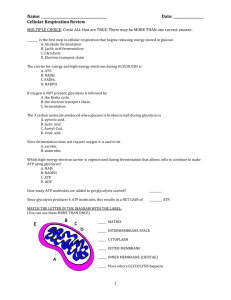CELL RESPIRATION Review 1) What is the purpose of cell
advertisement
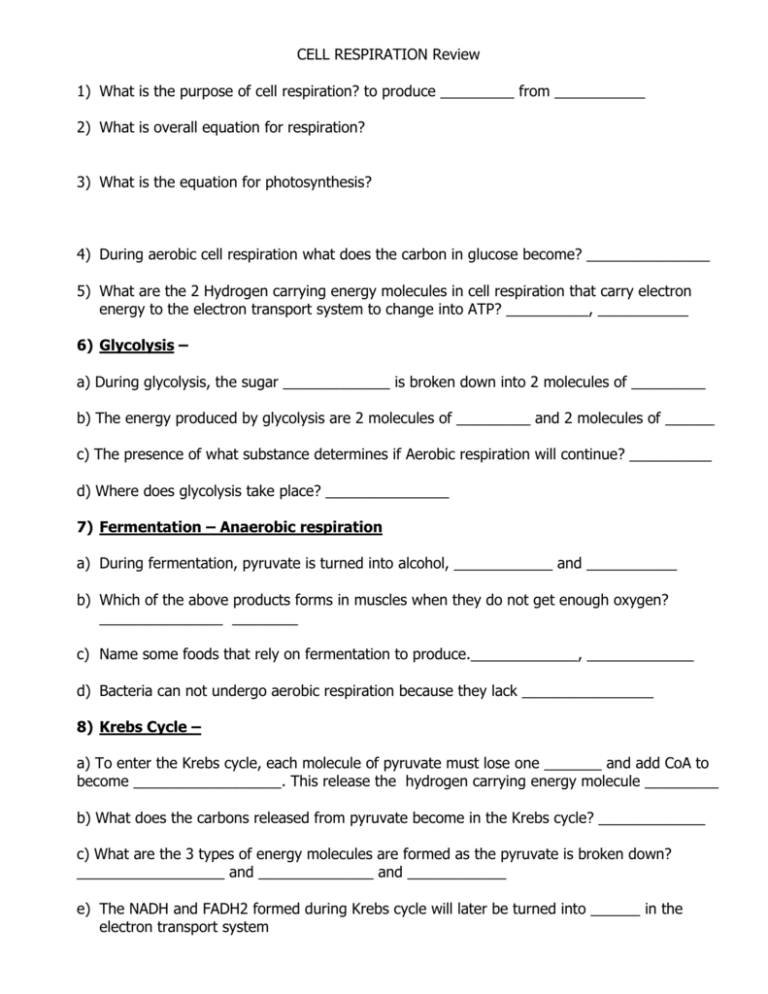
CELL RESPIRATION Review 1) What is the purpose of cell respiration? to produce _________ from ___________ 2) What is overall equation for respiration? 3) What is the equation for photosynthesis? 4) During aerobic cell respiration what does the carbon in glucose become? _______________ 5) What are the 2 Hydrogen carrying energy molecules in cell respiration that carry electron energy to the electron transport system to change into ATP? __________, ___________ 6) Glycolysis – a) During glycolysis, the sugar _____________ is broken down into 2 molecules of _________ b) The energy produced by glycolysis are 2 molecules of _________ and 2 molecules of ______ c) The presence of what substance determines if Aerobic respiration will continue? __________ d) Where does glycolysis take place? _______________ 7) Fermentation – Anaerobic respiration a) During fermentation, pyruvate is turned into alcohol, ____________ and ___________ b) Which of the above products forms in muscles when they do not get enough oxygen? _______________ ________ c) Name some foods that rely on fermentation to produce._____________, _____________ d) Bacteria can not undergo aerobic respiration because they lack ________________ 8) Krebs Cycle – a) To enter the Krebs cycle, each molecule of pyruvate must lose one _______ and add CoA to become __________________. This release the hydrogen carrying energy molecule _________ b) What does the carbons released from pyruvate become in the Krebs cycle? _____________ c) What are the 3 types of energy molecules are formed as the pyruvate is broken down? __________________ and ______________ and ____________ e) The NADH and FADH2 formed during Krebs cycle will later be turned into ______ in the electron transport system f) Where does the Krebs cycle take place? ________________ 9) Electron transport chain – (system) – ETC a) Where does the electron transport system take place? _________________ b) The purpose of the electron transport chain is to change hydrogen electron carriers into ___ c) What two energy carriers release their electrons to form ATP _____________ and ________ d) What molecule receives the electrons at the end of the chain? _________ e) What molecule is formed from the oxygen and hydrogen during the ETC? ________ f) How many ATP molecules form from 1 NADH? _______ g) How many ATP molecules form from one molecule of FADH2? __________ h) What are the ATP total production from ONE glucose molecule? Glycolysis = __________ ATP Krebs cycle = __________ ATP ETC = __________ ATP Total ATP = __________ ATP 10)On mitochondria diagram below, label the following: cytoplasm, outer membrane, inner membrane, and matrix. Also on diagram, show with a label where the following occur: Glycolysis, Krebs cycle and ETC



